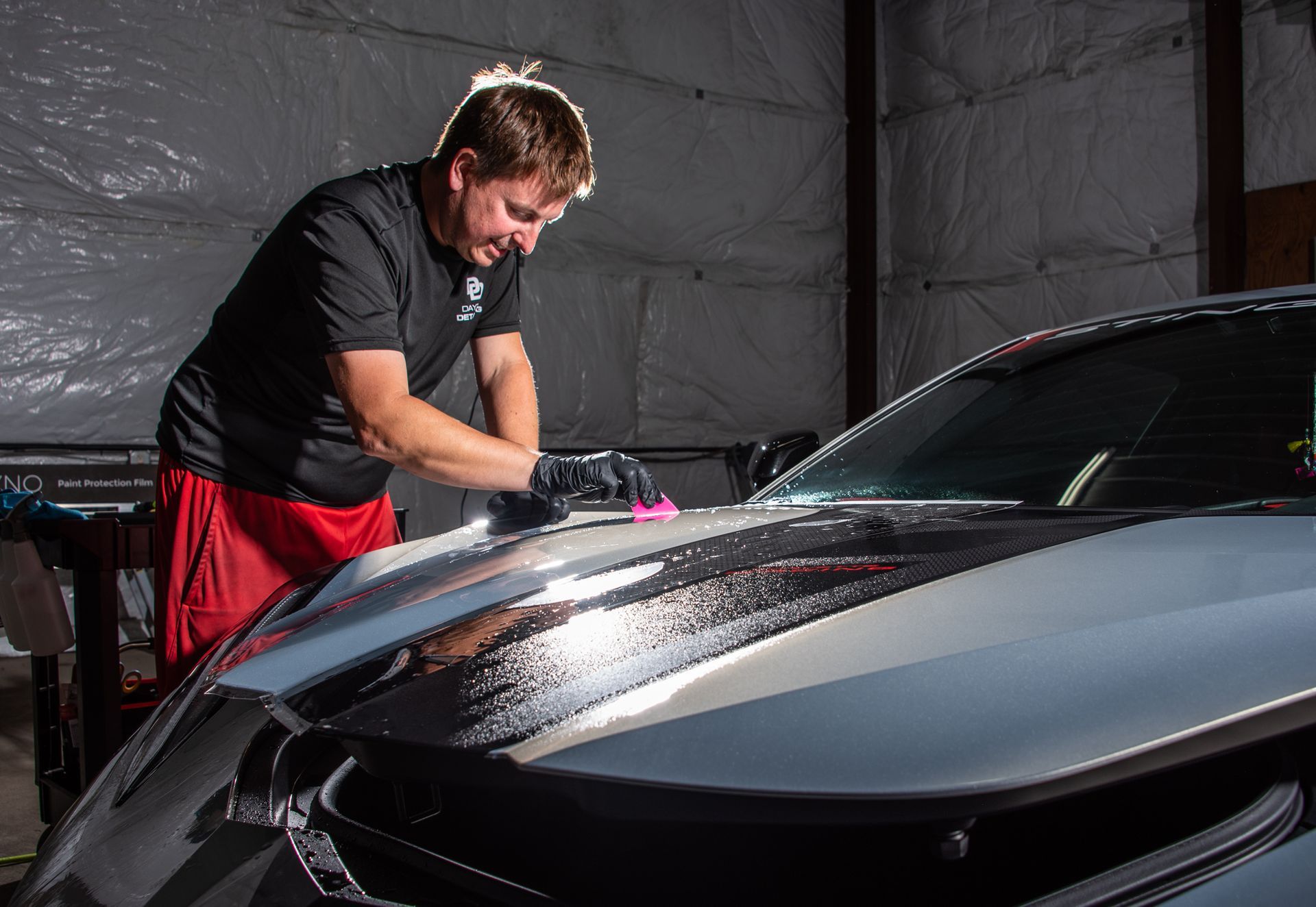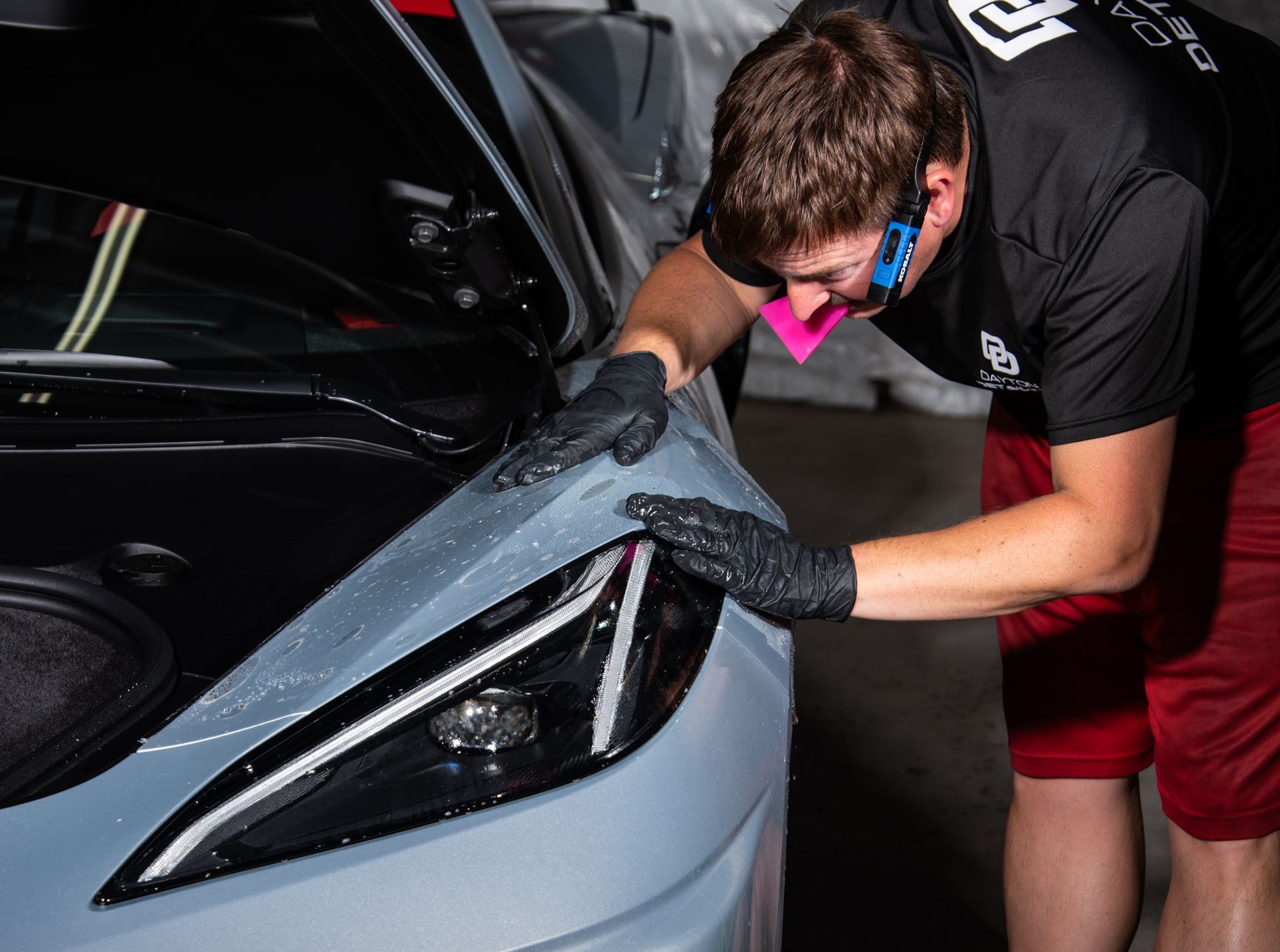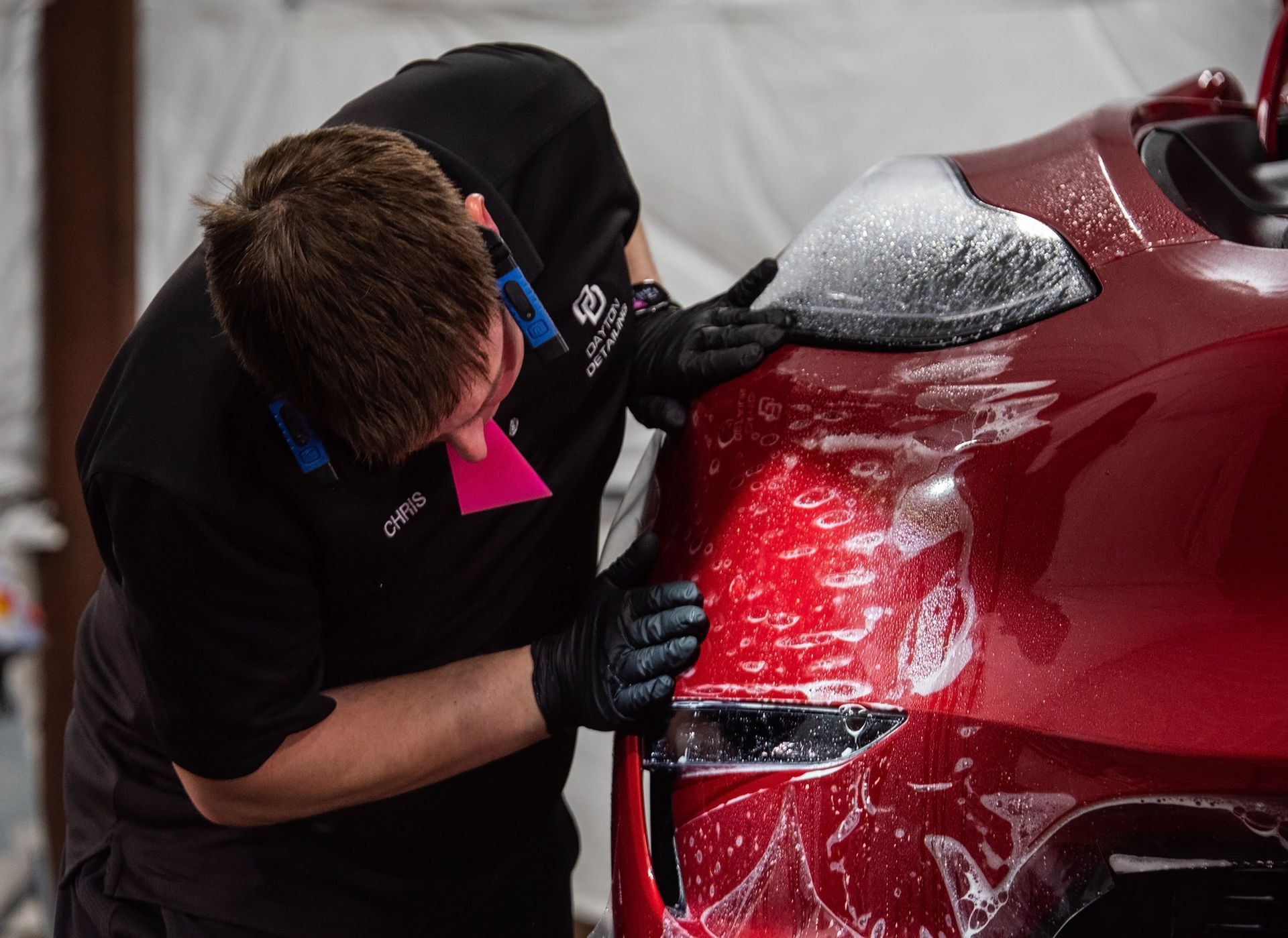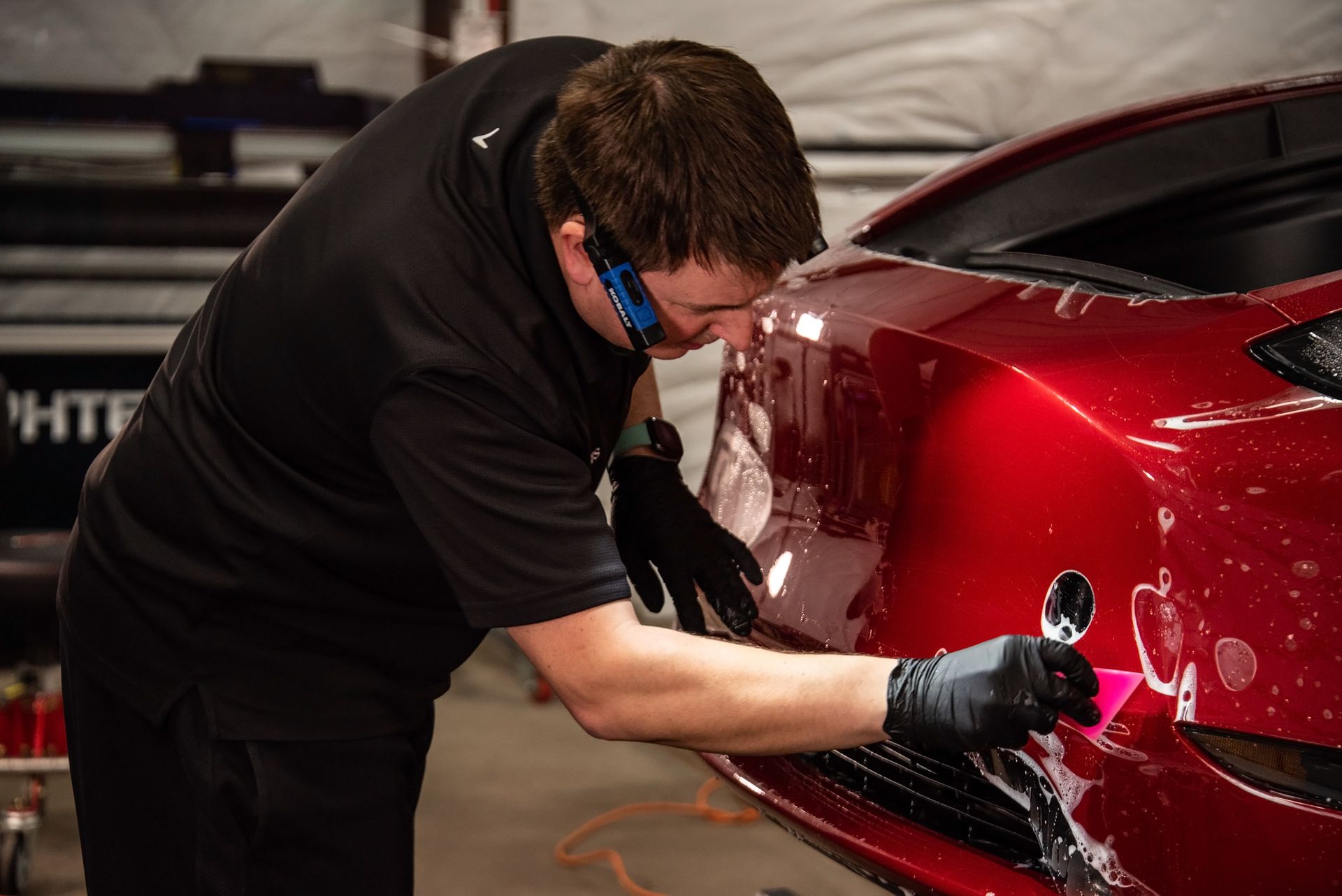UV Exposure and PPF Fading: The Connection Explained for Vehicle Owners
GET A FREE ESTIMATEWhen it comes to taking care of your vehicle, protecting its paint should be high on your priority list. Many car owners think that just washing their car is enough, but what they often overlook is the importance of paint protection film (PPF). This invisible shield can help keep your car looking brand new, but it’s not immune to the sun's powerful UV rays. In fact, these rays can cause paint protection film to fade faster than most people realize, making regular maintenance and care essential.
Prolonged UV exposure can significantly contribute to the fading and degradation of paint protection film (PPF), often resulting in noticeable wear within just a few years. While PPF serves as a protective barrier against environmental hazards, its effectiveness can diminish over time due to sun exposure, making proper maintenance essential to prolong its lifespan.
UV Exposure Effects on PPF
Exposure to UV rays can cause significant damage to paint protection film (PPF), much like the harm sunlight inflicts on unprotected skin. Prolonged exposure to the sun weakens the film’s structure, reducing its effectiveness over time. Below, we break down the effects of UV rays on PPF and provide practical maintenance tips to help preserve your vehicle's appearance and protection.
Effects of UV Rays on Paint Protection Film
- Molecular Breakdown and Deterioration: UV rays penetrate the surface of paint protection film, causing changes to its molecular structure. This leads to visible damage such as yellowing, cracking, or peeling, diminishing the film's protective qualities. A once-clear and vibrant shield can quickly become dull and unappealing, leaving your vehicle vulnerable to scratches and contaminants.
- Reduced Lifespan of Paint Protection Film: Studies reveal that prolonged sun exposure can shorten the effective lifespan of paint protection film. Factors such as film quality, thickness, and UV resistance play significant roles. While premium paint protection films can last 5 to 10 years, excessive sunlight can necessitate replacement much sooner.
- Impact on Vehicle Paint: Poor-quality paint protection films can cause further damage by chipping or wearing away, sometimes affecting the paint underneath. Vehicle owners may notice these issues only after significant deterioration has occurred, emphasizing the importance of choosing high-quality materials for installation.
- Environmental Influences:
Vehicles parked in direct sunlight experience faster degradation than those kept in shaded areas or garages. This highlights the critical role of the environment in maintaining paint protection film longevity and underscores the need for protective measures beyond standard film application.
Causes of PPF Fading
Maintaining the durability and visual appeal of paint protection film is essential to preserving the beauty and integrity of your vehicle’s paint. Identifying the causes of PPF fading allows you to take proactive steps in protecting both the film and the underlying paintwork. Below are the primary factors contributing to paint protection film fading and strategies to address them.
- Prolonged UV Exposure: Exposure to ultraviolet (UV) rays is a leading cause of PPF fading. When vehicles are parked in direct sunlight for extended periods, UV rays can penetrate the paint protection film’s surface, breaking down its polymers. This leads to a loss of gloss, clarity, and up to 50% of the film's original sheen within just two to three years of consistent exposure.
- High Temperatures: Elevated heat levels exacerbate the effects of UV exposure, causing the PPF material to lose structural integrity over time. In regions with extremely hot climates, the deterioration process is significantly faster. The constant expansion and contraction of materials due to temperature fluctuations further stress the paint protection film, contributing to its fading and weakening.
- Pollutants and Urban Exposure: Pollutants like acid rain, road grime, and bug splatter accelerate the wear and tear of paint protection film. Vehicles in urban environments face more exposure to these elements, leading to faster degradation compared to cars parked in less polluted areas. Regular cleaning helps mitigate this damage by removing harmful particles before they can cause permanent harm.
- Environmental Fluctuations: Rapid temperature shifts between extreme heat and cold can reduce the PPF’s adherence and lifespan. These fluctuations create cumulative stress on the material, diminishing its protective qualities over time. Approximately 60% of PPF deterioration is linked to environmental exposure, highlighting the impact of both seasonal changes and everyday weather conditions.
As PPF fades or deteriorates, it compromises the protection of your vehicle's paint. UV rays, pollutants, and heat that penetrate a weakened film can lead to fading or damage to the paint layer itself. Understanding this relationship emphasizes the importance of taking steps to preserve the PPF’s integrity.
Impact on Automotive Paint
The integrity of automotive paint is more vulnerable than many owners realize. Over time, without sufficient protection, paint can fade significantly. After just one year of continuous exposure to UV rays, a vehicle's paint can lose around 10–20% of its color intensity. This gradual degradation not only affects the aesthetic appeal but also lowers the vehicle's resale value. A proper layer of paint protection film, serves as an invisible barrier, slowing this process considerably.
The need for quality paint protection film becomes paramount considering that vehicles without any protection endure about 50% more paint degradation than those wrapped in high-quality film. However, it's essential to note that not all PPFs are created equal. If low-quality films are used, their eventual peeling or fading may actually damage the underlying paint rather than protect it. When removed, these inferior materials can pull away layers of paint or even leave a ghost image behind—an unsightly mark that’s hard to fix. Therefore, investing in reputable brands or professional installation services becomes crucial.
In line with the importance of quality, additional protective coatings, such as ceramic coatings, often come highly recommended. These coatings not only add another layer of shield against UV rays but also enhance the sheen and your vehicle's resistance against contaminants like dirt, grime, and bird droppings. Many vehicle owners swear by this two-layer approach; the thick protective film under a ceramic top coat can provide remarkable longevity. Moreover, the average lifespan of automotive paint extends from 5-7 years without PPF to a whopping 10-15 years when combined with a protective film—demonstrating that proper care and investment yield significant returns.
Solutions to Minimize Fading
There are specific, actionable steps vehicle owners can take to effectively minimize paint protection film fading and ensure its longevity. These steps not only secure aesthetic appeal but also protect against damaging UV rays, ensuring that the investment you've made in your vehicle remains intact over time. Regular upkeep forms the cornerstone of preserving PPF, and it all begins with washing your vehicle diligently and consistently.
Step-by-Step Actions
- Regular Washing: Keeping your car clean is paramount. The accumulation of dirt, pollutants, and road grime can dull the finish and accelerate the wear on your paint protection film. Washing your car once a week helps eliminate these contaminants before they have a chance to cause harm. Using a pH-balanced soap is important as it’s gentle enough not to strip away any protective coatings while cleaning.
- Use UV-Resistant Products: Once you've washed your car, consider applying UV-resistant waxes or sealants specifically designed for vehicles. These products form an additional barrier between the elements and the PPF, safeguarding it from intense sun exposure that leads to fading over time. Just like sunscreen on our skin protects us from harmful rays, UV-resistant treatments serve a similar purpose for your car's surface.
- Shaded Parking: Taking proactive measures can make a significant difference. Whenever possible, park your vehicle in shaded areas or use car covers during long-term storage. Direct sunlight hastens PPF degradation, so being strategic about where and how you park can save you from premature fading. In addition, shaded parking also helps maintain the overall temperature of your vehicle, reducing stress on the paint and protective film.
- Periodic Inspections: Finally, conduct routine inspections of your paint protection film for early signs of wear and tear. Look out for peeling edges or discoloration that may signal underlying issues. Addressing these concerns promptly will help prevent more extensive damage down the line. Regular inspections also allow you to catch minor imperfections early, ensuring your PPF continues to provide optimal protection and appearance.
By following these steps, you'll enhance the visual appeal of your vehicle while significantly extending the life of your paint protection film, ensuring it continues to provide effective defense against environmental wear. Each small effort accumulates into substantial benefits, contributing to the overall maintenance and care of your prized possession.
Choosing the Right Paint Protection Film
When it comes to protecting your vehicle, not all paint protection films are created equal. Selecting the right PPF can make a significant difference in both longevity and overall performance. From choosing trusted brands with advanced features to ensuring proper installation and maintenance, every step matters. Below is a breakdown of the key factors to consider when investing in PPF to keep your vehicle looking its best for years to come.
- Choose High-Quality PPF from Reputable Brands: Start by selecting PPF products from well-known and reputable brands that offer reliable warranties against UV damage. Premium films often come with advanced features such as enhanced hydrophobic properties and self-healing capabilities that allow minor scratches to vanish over time. While the initial cost may be higher, investing in superior PPF ensures long-term durability and peace of mind.
- Prioritize UV Resistance to Avoid Yellowing: High-quality PPF is specifically designed to resist yellowing caused by UV rays, which is essential for maintaining your vehicle's visual appeal. A dull or faded protective film on a car—especially an expensive one—can diminish its overall look and value. Opting for UV-resistant films ensures that your vehicle remains aesthetically pleasing while being well-protected from sun damage.
- Opt forProfessional Installation: Proper installation is critical to the effectiveness and longevity of the PPF. Professional paint protection film installers ensure optimal adhesion, preventing issues like peeling, bubbling, or improper coverage that can compromise protection. A meticulous installation process guarantees the film covers every inch of your car’s surface, offering an extra layer of defense against environmental elements such as road debris, dirt, and harsh weather.
- Follow Manufacturer-Recommended Maintenance Guidelines: Adhering to proper maintenance practices is essential for keeping the paint protection film in its best form. Manufacturers often recommend using pH-neutral cleaning solutions designed specifically for PPF and regular washing intervals to remove dirt and grime. Following these guidelines will help preserve the film’s effectiveness and prolong its protective qualities over time.
- Combine Quality PPF with Diligent Upkeep: The combination of investing in a high-quality paint protection film and practicing diligent maintenance creates the ultimate defense for your vehicle. Regular care not only guards against UV damage and environmental hazards but also ensures your car maintains its pristine appearance for years. By protecting your vehicle now, you’re making a smart investment in its future aesthetics and value.
Protect your vehicle today with premium PPF and proper maintenance. It’s an investment that enhances both appearance and longevity, keeping your car vibrant and protected for the road ahead.
Expert Paint Protection Film Installation in Dayton, OH
Shield your vehicle’s finish from chips, scratches, and road debris with the
premier paint protection film services offered by Dayton Detailing. Our skilled technicians utilize cutting-edge techniques and precision tools to seamlessly install high-quality PPF, preserving your car’s flawless appearance while maintaining its original aesthetic. With a dedication to excellence and long-lasting protection, Dayton Detailing ensures your investment stays pristine for years to come. Protect your ride with confidence—schedule your PPF installation today! Call us at (937) 409-9337 to get started!





